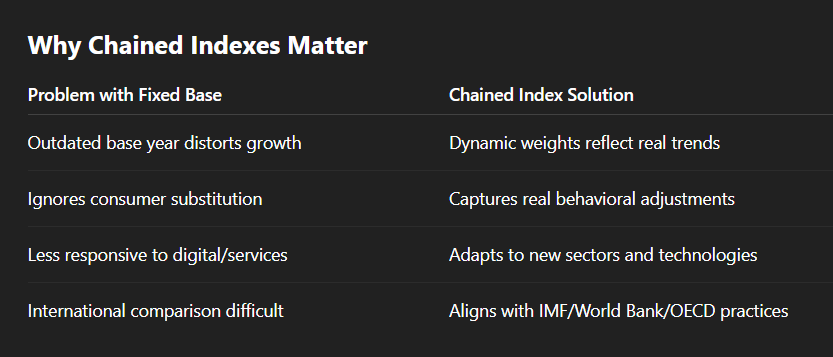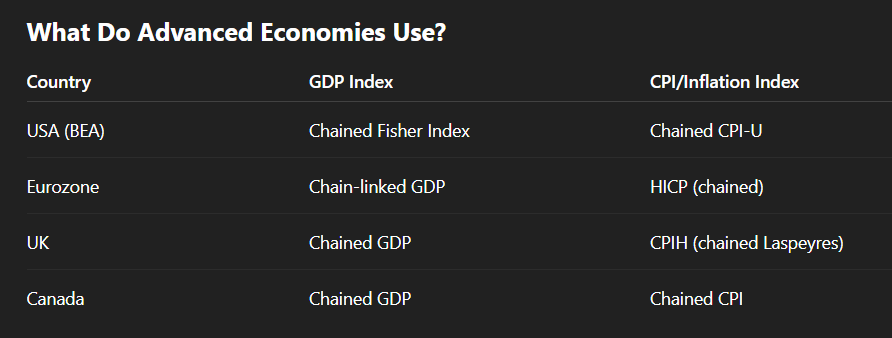Why India Should Adopt Baseless (Chained) Indexes for Better Economic Measurement
India’s economy is complex, fast-evolving, and increasingly digitized. Yet, many of its core economic indicators — like GDP and inflation — are still calculated using fixed-base indexes. While these served well in the past, chained (baseless) indexes are now the global standard for measuring real economic growth and inflation with greater accuracy. The shift to chained indexes is not just a technical upgrade — it is a policy necessity.
What Are Chained (Baseless) Indexes?
Chained indexes use changing weights from one period to the next, capturing dynamic changes in the economy (like consumption patterns or sectoral growth). This contrasts with fixed-base indexes, which use a single base year, assuming the economy remains structurally static.


These nations use chained indexes as default for their national accounts and inflation figures, improving policy targeting and economic forecasting.
How India Can Implement Chained Indexes
1. GDP — Chained Volume Measures
Methodology:
- Use annual or quarterly weighting instead of a fixed base year.
- Calculate real GDP as a chain index using:
- Laspeyres-type or Fisher-type formulas.
- Inter-year linking (e.g., 2022 based on 2021, 2023 based on 2022, etc.)
- Use SNA 2008 guidelines already recommended by the UN.
Implementation Steps:
- CSO/National Statistical Office (NSO) must:
- Develop a consistent time series of annual weights.
- Ensure sectoral disaggregation is compatible with chaining.
- Revise the National Accounts Manual to support chaining.
2. Inflation — Chained CPI
Methodology:
- Update consumer expenditure weights more frequently (yearly or biennially).
- Use Chained Laspeyres or Fisher indexes.
- Introduce real-time price substitution modeling (e.g., if oil rises, gas stove usage rises).
Implementation Steps:
- Conduct annual or rolling household consumption surveys.
- Update weights based on actual shifts in urban and rural consumption.
- Train inflation analysts in dynamic index modeling.
Benefits for India
✅ More Accurate Measurement
- Reflects actual economic structure, especially in services, digital and informal sectors.
✅ Better Policy Design
- RBI and Finance Ministry can target inflation and growth based on real behavior, not outdated assumptions.
✅ Credibility in Global Rankings
- Aligns India with IMF and OECD standards.
- Improves global investor confidence and data reliability.
✅ Handles Economic Shocks Better
- Captures shifts like demonetization, COVID-19, and tech adoption far more accurately.
Conclusion
Adopting chained indexes is a technical reform with massive strategic value. As India eyes a $5 trillion economy, our measurement tools must match our ambitions. The move to chained GDP and CPI indexes will ensure that our data reflects our true economic reality, guiding smarter policy and better governance.